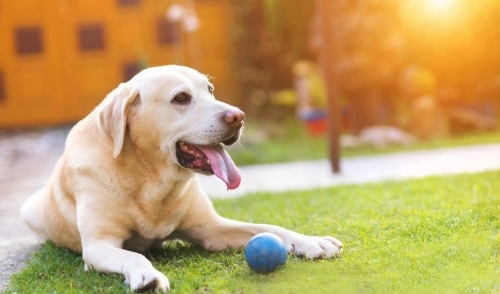
Can Pets Get Sunburned?
We all know the importance of wearing sunblock, sunglasses, broad-brimmed hats, and other gear to protect our skin from the harsh summer sun, but how do you protect your pets? Can pets get sunburned?
What Pets Can Get Sunburned
Many popular pets are just as vulnerable to sunburn as their owners. Cats and dogs are especially prone to sunburn, particularly breeds with very short or fine coats, as well as hairless breeds like the American hairless terrier and hairless Chinese crested dogs or sphynx and donskoy cat breeds. Breeds that have heavy seasonal shedding or white fur are also more susceptible to sunburn, as are any small, furry pets such as chinchillas, ferrets, rabbits, gerbils, and hamsters.
On any pet, parts of the body with thinner, finer hair or natural bare patches can easily sunburn. This includes the tip of the tail, the ears, and near the nose. The groin and belly can also be sunburned, especially if the pet likes to lay on its back or if sunlight is reflected from bright surfaces, such as concrete. Animals that may have injuries or temporary bald patches, like post-surgery stitches or specific grooming patterns, are also apt to get sunburned.
Sunburn on Pets
Just like with humans, a pet’s sunburned skin will turn pink or reddish. The skin may look dry, cracked, or even blistered if the sunburn is severe. The skin could feel hot or the animal may develop a slight fever. Over time, hair loss could occur on skin that is frequently burned. Sunburned pets may also be more sensitive to petting and more likely to shy away from contact on their injured skin.
While a mild sunburn may only be uncomfortable for a few days, more severe burns that cause blistering could lead to worse injuries, particularly if the blisters rupture and get infected. Over time, animals that have been sunburned may also develop different types of skin cancer.
Protecting Pets From Sunburn
There are a number of easy ways pet owners can protect their animals from uncomfortable and dangerous sunburns. Even if a pet has never shown signs of sunburn, it is important to offer suitable sun protection at all times.
- Keep the pet indoors from late morning to early evening when the sun is at its strongest. If the pet must be outside, be sure there is plentiful, deep shade and other shelter to protect it from the sun.
- Walk pets during the early morning or late evening during the summer to avoid the worst sunlight. This is also when the temperatures – including asphalt and sidewalk pavement – will be cooler and safer for walking.
- Do not shave your pet for summer comfort. An animal’s coat is designed to protect its skin and help insulate its body from both heat and cold, and shaving can cause more grooming problems and promote sunburn.
- Apply pet-friendly sunscreen to your pet’s most vulnerable and exposed skin. Choose varieties without zinc oxide, which can be toxic to pets, and reapply the sunscreen after a swim or if the animal is outdoors for lengthy periods.
- Consider using UV-protective clothing, such as light wraps, vests, or hats, if your pet will tolerate the gear and can wear it comfortably. Be sure the clothes fit appropriately and are the right size for your animal.
If you do suspect your pet has been sunburned, apply cool compresses to the affected skin and seek veterinary care immediately for an evaluation. Medical treatment may be necessary for severe burns, including wound care and topical medication to reduce pain and prevent skin infections.
Other Summer Risks
In addition to sunburn, be aware of other summer risks your pet may face. Dehydration and heatstroke are common in summer, particularly for active, energetic pets, and delicate feet could be burned from hot pavement and other surfaces. Ticks, fleas, and other disease-carrying pests thrive in the summer, so check your pet often for these unwanted interlopers. Even summer activities that seem fun and innocuous – such as backyard barbecues – can be a risk to pets, because many of the foods are unhealthy or toxic. Being aware of sunburn and other threats to pets can help you ensure all your animal family members are safe and comfortable throughout the season.
